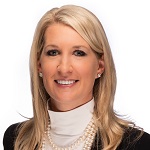It is certainly a different experience navigating through a remote-work environment, especially for colleagues who once worked so closely to one another. It was fairly easy to share updates, photos, and ideas when the team physically occupied the same space each day; and chances are that your team likes each other, respects each other, and genuinely has an interest in each other’s lives outside of work. Now your team is likely working in different surroundings with various family or personal obligations and challenges to tackle. However, maintaining that strong team culture, camaraderie, and spirit of togetherness is still possible.
It’s all about the three C’s - staying connected, communicative, and creative. See some examples below on how to do this with your team:
See each other, don’t just talk to each other.
Use video whenever possible for team meetings. It brings a sense of togetherness and is much more engaging than a conference call. Facial expressions are a significant part of how we communicate, and chances are that your team misses those unique expressions.
Acknowledge the imperfections.
Don’t try to gloss over interruptions from a pet, child, partner, or any other background “noise” or distraction. Ask what is going on, have empathy and get to know your team through their challenges. This is how relationships are deepened. Allow your team to see that they have your support no matter what and that will go a long way in terms of retention of talent.
Schedule social time for the team–no business discussed. No exceptions.
Put a recurring weekly (or you name the timeframe) social meeting on the calendar to connect with each other using video. Make this unscripted social time, and under no circumstance should business be discussed. This is the equivalent of the Friday afternoon lunch or happy hour that the team may have engaged in pre-pandemic. Ensure that dress is casual, and all updates are fair game during this meeting.
Engage the team for ideas on how to mix it up.
More minds means more great ideas. Don’t feel as if you have to be alone in building and cementing team culture. Ask for ideas, brainstorm, and maybe even rotate a team social leader periodically to freshen it up. Your team will appreciate the engagement, and they probably have some very creative ideas that you may not have thought about.
Support each other and don’t hesitate to ask for help.
If you think back to last year, there was probably a time where members of your team were going through something either personally or professionally and it was written all over their face in the office. And, being the close-knit team that you are, you rallied around that team member and helped him/her in any way that you could, or that was appropriate. When we are distanced, those moments can be hidden or can happen without others being aware. Take the lead in being vulnerable and allow your team members to do the same. Ask for their advice on a personal challenge, or their support. They will be glad you asked and will feel more open to sharing their own challenging moments when they arise.
Acknowledge extraordinary ideas and contributions.
Take the time to shout out a team member for a fantastic idea, incredible client service, utilization of a technology resource, etc. Send a quick email to the team, shout it out on a video team meeting, or send them a handwritten note. Those little “thank you’s” or congratulatory comments go much further right now. Our days have never been busier, and it can be easy to move from one success to the other without any mention. Make sure positive feedback is a priority in your communication strategy, even for the little things. It will help your team members feel like they are valued, contributing, and making a difference–even from afar.
Go above and beyond for each other.
Send something to a team member: a random meal, a funny card, a bouquet of flowers, a small token of appreciation, a dog treat, a book for their child, etc. The list can go on and on because the gift can be personal, it can reflect the relationship you have with that team member, that’s the beauty of it. This is the time to show appreciation for each other in unique ways. It isn’t about the value of the gift/acknowledgement, it is about the level of thoughtfulness and how that small gesture might make someone’s entire week.
Ask for feedback.
Frequently and proactively ask your team how they are feeling. What is their energy level? What is working? What is NOT working? What would they like to do differently, or change? Make this conversation part of your team culture. None of us has this all figured out, and chances are that none of us will ever get it right all of the time. But if you build a culture of open, honest communication amongst your team and tap into that during these unique times, your team will feel comfortable sharing their thoughts.
While we are still distanced, and beginning to dip our toe into some semblance of normalcy, ensure that your team is at the top of your list. Having empathy, truly listening to their plight, and offering thoughtful, kind solutions is what may make the difference between a team that is surviving, versus a team that is thriving. Keeping a strong, tight-knit team culture will ensure that your team continues to be collaborative, supportive, and a place where people want to work during these rapidly changing times.
Julie Genjac is a registered representative of Hartford Funds Distributors, LLC.
Check the background of this firm/individual on FINRA's BrokerCheck.





